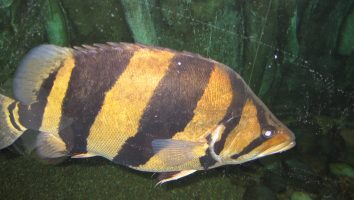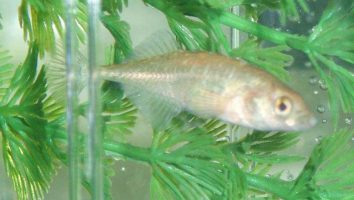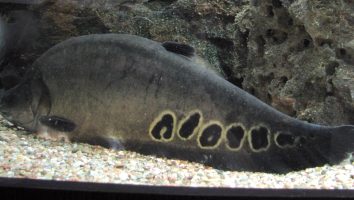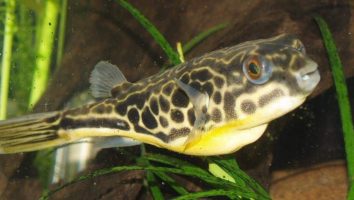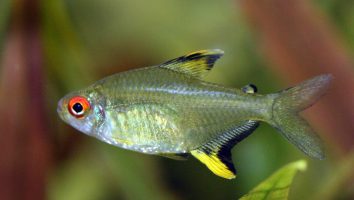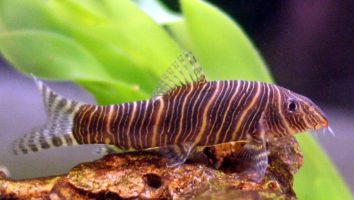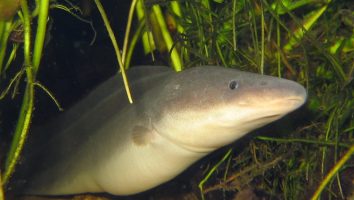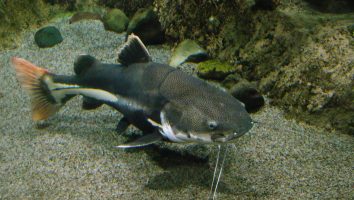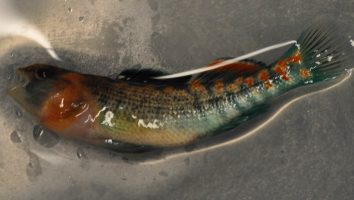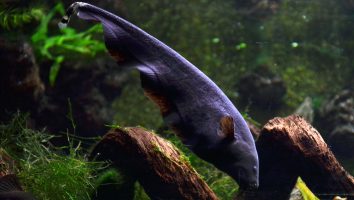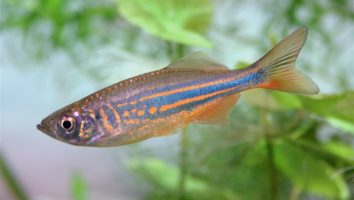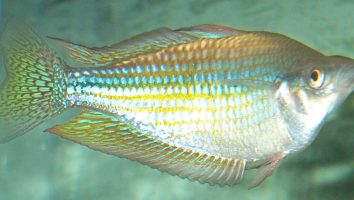The Australian rainbowfish is a stunning freshwater fish that is native to, you guessed it, Australia.
This fish gets its name from its beautiful colors which can range from blues and greens to reds and oranges.
They’re a relatively easy fish to care for as long as you provide them with the proper environment and diet.
In this guide, we’ll teach you everything you need to know about Australian rainbowfish care. You’ll learn about their diet, tank mates, lifespan, and more!
Table of contents
Species overview
Australian rainbowfish are a type of freshwater fish that are native to Australia and New Guinea. They are usually found in slow-moving rivers and streams with plenty of vegetation.
Australian rainbowfish are very popular in the aquarium trade due to their bright colors. They come in a wide variety of colors, including blue, green, red, and orange.
These fish are relatively easy to care for and are compatible with a wide variety of tank mates. They are not overly aggressive, but they may nip at the fins of slower-moving fish.
Appearance
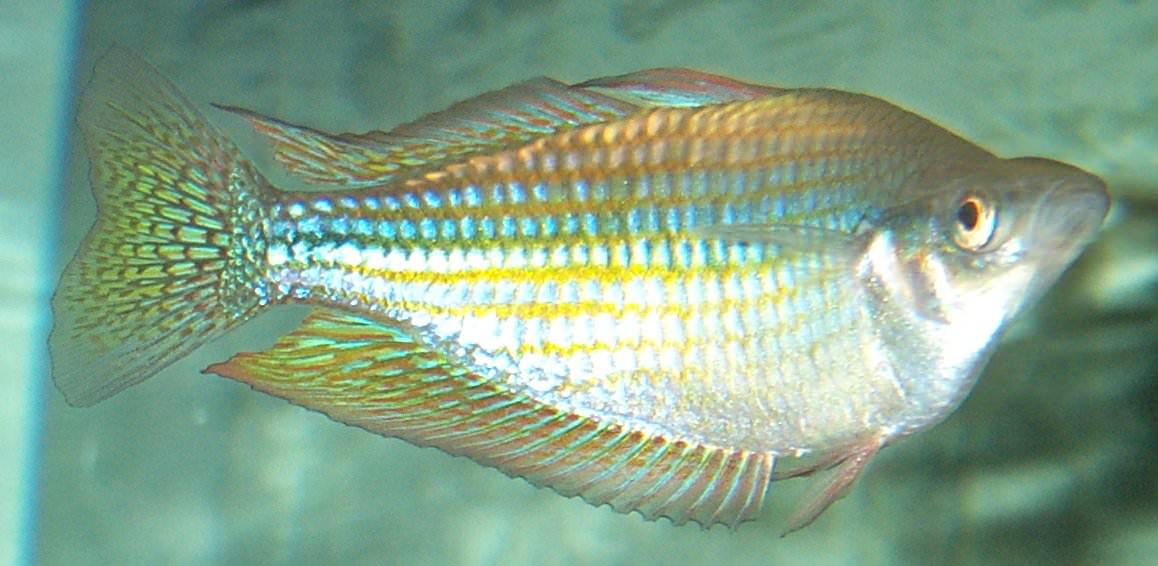
The Australian rainbowfish is an absolutely stunning freshwater fish that would be a great addition to any aquarium.
As the name suggests, these fish are very colorful. The colors on their bodies can range from bright blues to greens, yellows, and even oranges. The colors are very vivid and really stand out against the dark black stripes that run along their sides.
The fins on these fish are very prominent and really add to their beauty. The dorsal fin is tall and starts about two-thirds of the way back on their body.
The anal fin is a bit shorter but still fairly tall. Both of these fins have a beautiful black stripe running down the middle with the rest of the fin being a lighter color.
The caudal fin is forked and fairly tall as well. The colors on the caudal fin are very similar to the colors on the dorsal and anal fins.
The pectoral fins are short and stubby in comparison to the other fins. They’re a bit more transparent as well.
One of the most interesting things about Australian rainbowfish is their eyes. These fish have very large eyes that almost seem too big for their heads.
The eyes are usually a bright red or orange color that really stands out.
Lifespan
The average lifespan of an Australian rainbowfish is 3-5 years. However, with good care they can live up to 8 years.
Size
The average size of an Australian rainbowfish is between 4 and 6 inches. However, some species can grow to be up to 8 inches in length.
Tank
Tank Size
The recommended tank size for Australian rainbowfish is at least 30 gallons. This is assuming you want to keep a school of 5 or more fish. If you want to keep a smaller school or just a single fish, you can get away with a 20 gallon tank.
The extra space will allow your fish to swim around and explore their environment. It will also give you a little more leeway when it comes to stocking your tank with other fish.
Water Parameters
These fish come from a variety of habitats, so there is some flexibility when it comes to water parameters. However, they all share one common trait: a preference for well-oxygenated water.
You can achieve this in a couple of ways. The first is to use an aquarium filter that has a high flow rate. The second is to add an air stone to help aerate the water.
Another thing to keep in mind is that rainbowfish are social creatures. They do best in groups of six or more. A larger group will help reduce aggression and allow these fish to show their natural behaviors.
Here are some general guidelines for water parameters.
- Water temperature: 72 to 82 degrees Fahrenheit
- pH levels: 6.8 to 7.6
- Water hardness: 5 to 15 dGH
- Alkalinity Levels: 4-8 dKH
What To Put In Their Tank
When it comes to the inside of the tank, there are a few key things you’ll want to include.
First and foremost amongst these is some form of plants. Australian rainbowfish love to hide in and amongst vegetation (it makes them feel safe).
You don’t need to go overboard with this, but a few good plants can make a big difference. Water wisteria, hornwort, and java moss are all great choices.
Another important thing to include in their tank is some driftwood. This gives them somewhere to hide and also provides a nice surface for algae to grow on (which they’ll love to nibble on).
As for the substrate, these fish don’t really have any specific needs. Gravel or sand will both work just fine.
Common Diseases
These fish are actually quite hardy and don’t get sick often. However, there are still a few diseases that you should be aware of.
The most common disease that affects Australian rainbowfish is ich. This is a parasitic illness that manifests itself as white spots on the body of the fish.
If left untreated, it can be deadly. However, it’s relatively easy to treat if you catch it early enough.
Another disease that can affect these fish is hole-in-the-head disease. This is another parasitic illness that is caused by poor water quality.
It manifests itself as pits or holes in the head of the fish. Again, this is something that can be deadly if left untreated but is relatively easy to treat if caught early.
The best way to prevent these diseases is to simply maintain the quality of the water in your tank. A clean and stable environment is always the best way to keep your fish healthy and disease-free.
Behavior & Temperament
The Australian rainbowfish is a beautiful, peaceful fish that is perfect for beginner aquarists. These fish are very easy to care for and can live in a wide range of environments.
One thing to keep in mind is that Australian rainbowfish are schooling fish. This means that they do best when they are kept in groups. A single fish will often be shy and stressed, which can lead to health problems.
When they are in a school, Australian rainbowfish are very active. They are constantly swimming around and exploring their environment. They are also very curious, so don’t be surprised if they come up to the glass to check you out!
These fish are not aggressive and get along well with other peaceful fish. They are also not known to nibble on plants, so they can be a good option for planted tanks.
Tank Mates
Australian rainbowfish are a great addition to any community tank. They’re peaceful, beautiful, and easy to care for.
When it comes to finding the right tank mates, you have plenty of options. These fish are compatible with most peaceful species.
To help get you started, here are some compatible tank mates that tend to work well:
- Guppies
- Mollies
- Platies
- Swordtails
- Tetras
- Rasboras
- Danios
- Rainbows are also compatible with most peaceful cichlids. This includes species like:
- Angelfish
- Discus
- Kribensis
- Dwarf Gouramis
Breeding
The best way to breed Australian rainbowfish is in a dedicated breeding tank. This is because the fry need a lot of hiding places and dense vegetation to survive.
Your breeding tank should be at least 30 gallons and should have a lot of live plants. If you can’t find live plants, fake plants will work too. Just make sure that they’re dense and have a lot of nooks and crannies for the fry to hide in.
You should also add a lot of caves and other hiding places for the adults. Rainbowfish are known to be quite aggressive when it comes to spawning, so the more places to hide, the better.
When setting up your breeding tank, remember to use a fry-safe filter. Sponge filters work well for this purpose.
As for water conditions, Australian rainbowfish prefer neutral to slightly alkaline water. The temperature should be between 72 and 82 degrees Fahrenheit.
When your breeding tank is set up, it’s time to add the fish. For best results, you should have two males for every female. This will help to increase the chances of spawning.
Australian rainbowfish are known to be quite aggressive when it comes to spawning, so the more places to hide, the better.
As for water conditions, Australian rainbowfish prefer neutral to slightly alkaline water. The temperature should be between 72 and 82 degrees Fahrenheit.
When your breeding tank is set up, it’s time to add the fish. For best results, you should have two males for every female. This will help to increase the chances of spawning.
When the fish are ready to spawn, you’ll see the males chasing the females around. The males will also start to build nests out of plant material.
Once the female is ready to lay her eggs, she’ll do so in the male’s nest. The male will then fertilize the eggs and guard them until they hatch.
Eggs usually hatch within two weeks. When they do, you can start feeding the fry live food. Baby brine shrimp and microworms are both good options.
As the fry grow, you can start to introduce them to flake food. Once they’re big enough, they can be moved to your main tank.
Conclusion
All in all, we think the Australian rainbowfish is a great fish for anyone looking to add a splash of color to their tank. They’re relatively easy to care for and get along well with other community fish.
The only thing to be aware of is that they need a little more space than some of the other fish on this list. But as long as you have a tank that’s at least 20 gallons, you should be good to go!

